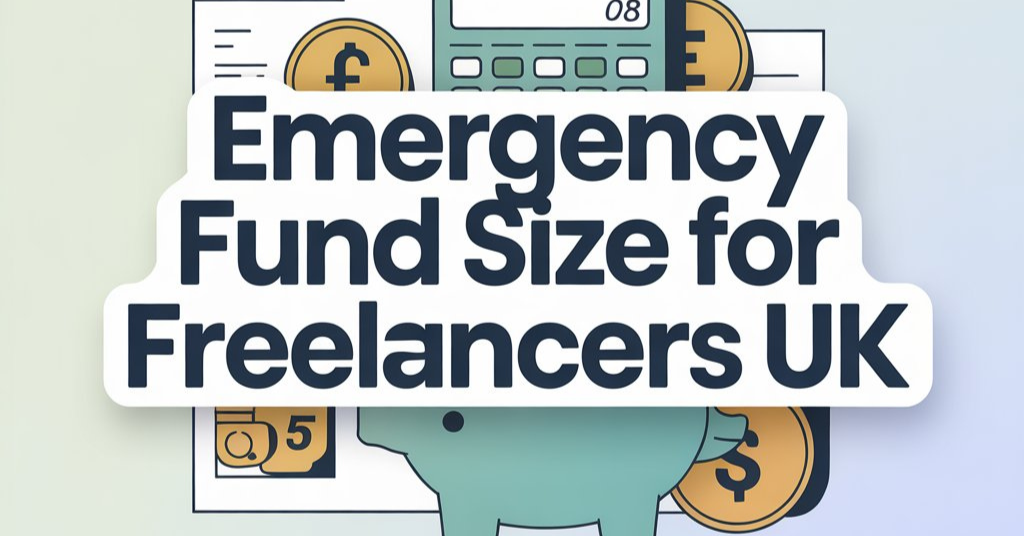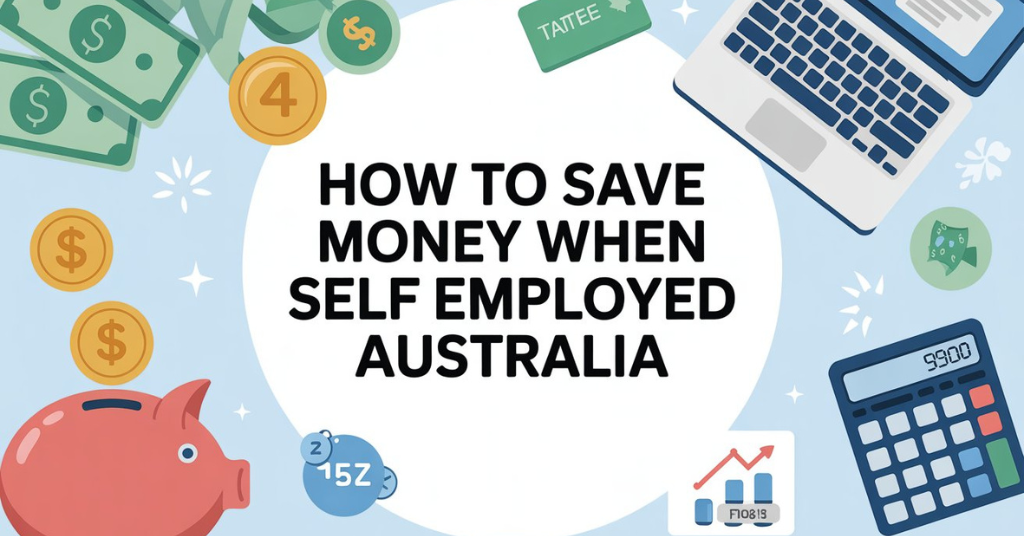Freelancing gives you freedom, but it also brings income uncertainty. Some months are full of work, while others may be quiet. This is why every freelancer needs an emergency fund — a financial safety net that helps you stay stable when your income drops or unexpected expenses appear.
In this guide, we will explain everything about the ideal emergency fund size for freelancers UK, how to calculate it (in simple dollars), examples with real numbers, and tips to build it step by step.
🔹 What is an Emergency Fund?
An emergency fund is money saved for unexpected events like:
- Losing clients
- Medical emergencies
- Sudden business expenses
- Delayed payments
- Equipment repair
It’s your financial cushion that protects you when regular income slows down.
For freelancers, it’s not optional — it’s essential. Unlike salaried employees, freelancers don’t have monthly job security, paid leave, or employer benefits. Your emergency fund becomes your “backup salary.”
🔹 Why Freelancers in the UK Need a Bigger Emergency Fund
Freelancers face many financial ups and downs. Let’s see why your emergency fund should be larger than average:
- Unstable income: Your earnings change every month.
- No job benefits: You don’t get sick pay, pension, or redundancy money.
- Tax responsibility: You pay your own taxes and national insurance.
- Business expenses: You pay for tools, software, and office space yourself.
- High UK living costs: Rent, transport, and bills are expensive, especially in big cities.
Because of these factors, most experts suggest freelancers save 6 to 12 months of living expenses instead of the standard 3 months.
🔹 How Much: Emergency Fund Size for Freelancers UK
To know the right amount, you must calculate your essential monthly expenses first.
Here’s a simple formula:
Emergency Fund = Monthly Essential Expenses × 6 to 12 months
✅ Step 1: Find Your Essential Monthly Expenses
Write down only the necessary costs you can’t avoid each month. Exclude luxuries or entertainment.
Example:
| Expense Type | Monthly Cost ($) |
| Rent | $1,200 |
| Groceries | $400 |
| Utilities (Gas, Internet, etc.) | $150 |
| Transport | $200 |
| Insurance (Health + Business) | $100 |
| Loan/EMI Payments | $150 |
| Business Tools (Software, Wi-Fi, etc.) | $300 |
| Total Monthly Essentials | $2,500 |
So, your essential monthly expense = $2,500
✅ Step 2: Choose the Right Duration
Freelancers usually save between 6 and 12 months of expenses.
- If your income is stable → 6 months is fine
- If your income is irregular or seasonal → aim for 9–12 months
Let’s say you choose 9 months.
Emergency Fund = $2,500 × 9 = $22,500
This means your emergency fund goal is $22,500.
✅ Step 3: Add a Business or Tax Buffer
Since freelancers handle taxes and business costs, it’s smart to add 10–20% extra as a buffer.
Let’s add 15%.
$22,500 × 0.15 = $3,375
So, total = $22,500 + $3,375 = $25,875
You can round it to $26,000.
✅ Your ideal emergency fund = $26,000
🔹 Example 1: Basic Freelancer (Low Cost Area)
| Category | Amount ($) |
| Monthly essentials | $1,800 |
| Duration | 6 months |
| Emergency Fund | $1,800 × 6 = $10,800 |
| Add 10% buffer | $10,800 × 0.10 = $1,080 |
| Total Fund Needed | $11,880 (~$12,000) |
This is good for freelancers living in smaller UK towns with moderate costs.
🔹 Example 2: Mid-Level Freelancer (Average Costs)
| Category | Amount ($) |
| Monthly essentials | $2,500 |
| Duration | 9 months |
| Emergency Fund | $2,500 × 9 = $22,500 |
| Add 15% buffer | $22,500 × 0.15 = $3,375 |
| Total Fund Needed | $25,875 (~$26,000) |
Perfect for freelancers in average-cost areas or those with mid-level expenses.
🔹 Example 3: London-Based Freelancer (High Cost Area)
| Category | Amount ($) |
| Monthly essentials | $3,500 |
| Duration | 12 months |
| Emergency Fund | $3,500 × 12 = $42,000 |
| Add 20% buffer | $42,000 × 0.20 = $8,400 |
| Total Fund Needed | $50,400 (~$50,000) |
London has higher rent and transport costs, so saving a year’s worth of expenses is safer.
🔹 Step-by-Step Plan to Build Your Emergency Fund
Let’s say your goal is $25,000, and you currently have $5,000 saved.
Remaining = $25,000 – $5,000 = $20,000
Now plan how to save it.
🧾 Step 1: Decide a Timeframe
Suppose you want to reach your goal in 20 months.
$20,000 ÷ 20 = $1,000 per month
So, save $1,000 every month.
If your income varies:
- Save more in good months
- Save less in slow months, but never skip saving completely
🧾 Step 2: Automate Your Savings
- Open a separate savings account for your emergency fund.
- Automate a monthly transfer of $1,000 to this account.
- Treat it like a fixed business expense.
🧾 Step 3: Use “Windfalls” Wisely
If you get a big freelance payment or bonus, put 30–50% of it directly into your emergency fund.
Example:
- You receive $4,000 for a project.
- Put $2,000 into your fund.
- Keep $2,000 for personal/business use.
This speeds up your savings.
🧾 Step 4: Cut Non-Essentials
To save faster:
- Cancel unused subscriptions
- Eat out less
- Buy only necessary tools
- Avoid unnecessary upgrades
Even saving $100–$200 extra monthly helps build your fund quicker.
🧾 Step 5: Reassess Every 6 Months
Costs and income change. Every 6 months:
- Recalculate expenses
- Check if your savings are on track
- Adjust your goal if living costs increase
Example:
If your monthly expense rises from $2,500 to $2,800, your new goal will be higher:
$2,800 × 9 = $25,200 + 15% buffer = $28,980 (~$29,000)
🔹 Where Should You Keep Your Emergency Fund?
The money must be easy to access but not easy to spend.
✅ Best options for UK freelancers:
- High-interest savings account (instant access)
- Online bank or digital savings app
- Split between two accounts — half for “urgent use” and half for “deep backup”
Avoid investing your emergency fund in stocks or crypto. The goal is safety, not profit.
🔹 When Should You Use the Emergency Fund?
Use it only in real emergencies, such as:
- Losing a big client
- Sudden medical expense
- Essential equipment repair
- Long payment delays
❌ Don’t use it for:
- Holidays
- Shopping
- Luxury upgrades
Whenever you use it, make a plan to rebuild it again.
🔹 Tips to Maintain and Grow Your Fund
- Start small, grow steady: Even $200/month adds up over time.
- Treat it like a business investment: It protects your freelance career.
- Save before spending: Each time you get paid, move your “savings” first.
- Reinvest surplus: If you hit your goal early, invest the extra in long-term savings.
- Track with apps: Use budget apps to monitor progress.
- Separate taxes: Keep your tax money in another account so you don’t dip into your emergency fund.
🔹 Common Mistakes to Avoid
❌ Waiting to start: Don’t wait for “extra” income — start small today.
❌ Mixing funds: Keep emergency money separate from business accounts.
❌ Ignoring inflation: Recalculate once a year to adjust for rising costs.
❌ Investing your fund: It must be liquid (easy to withdraw anytime).
❌ Not refilling after use: Once used, rebuild immediately.
🔹 Mini-Checklist: Building Your Emergency Fund
| Step | Action | Example |
| 1 | Note monthly essentials | $2,500 |
| 2 | Choose duration | 9 months |
| 3 | Multiply expenses × months | $22,500 |
| 4 | Add 15% buffer | $3,375 |
| 5 | Target amount | $25,875 (~$26,000) |
| 6 | Current savings | $5,000 |
| 7 | Remaining | $20,000 |
| 8 | Savings per month (20 months) | $1,000 |
🔹 Quick Conversion Table for Different Budgets
| Monthly Expense ($) | 6 Months | 9 Months | 12 Months |
| 1,500 | 9,000 | 13,500 | 18,000 |
| 2,000 | 12,000 | 18,000 | 24,000 |
| 2,500 | 15,000 | 22,500 | 30,000 |
| 3,000 | 18,000 | 27,000 | 36,000 |
| 3,500 | 21,000 | 31,500 | 42,000 |
Add 10–20% buffer depending on your freelance situation.
🔹 Why 6 to 12 Months Makes Sense
- 6 months: For freelancers with steady clients or part-time jobs.
- 9 months: For moderate income variation.
- 12 months: For those relying on seasonal projects or one-time contracts.
This ensures you have peace of mind even during dry spells.
🔹 Example: Freelancer With Irregular Income
Sarah is a UK freelance designer.
Her monthly average income: $3,000
Average expenses: $2,200
But some months she earns only $1,500.
She chooses to save 9 months of expenses:
$2,200 × 9 = $19,800
Adds 15% buffer = $2,970
✅ Goal: $22,770 (~$23,000)
She already has $7,000 saved.
Remaining = $23,000 – $7,000 = $16,000.
If she saves $800/month → she’ll reach her goal in 20 months.
🔹 Financial Peace for Freelancers
Having an emergency fund is not just about saving money; it’s about freedom and confidence. You can say “no” to bad projects, take time off, or handle emergencies without panic.
Think of your emergency fund as:
- A personal insurance policy
- A stress reducer
- A business stabilizer
When you know your bills are covered for several months, you work smarter and sleep better.
Also Read: Master Your Personal Finances with Smart Budgeting Cash Flow Tips
🔹 Final Thoughts
An emergency fund is your best financial friend as a freelancer in the UK. It protects your income, your peace of mind, and your business.
Let’s recap the main formula:
Emergency Fund = (Monthly Essential Expenses × 6–12 months) + 10–20% buffer
For example, if you spend $2,500 per month:
$2,500 × 9 months = $22,500
Add 15% buffer ($3,375) → $25,875 (~$26,000)
Start saving slowly but consistently. Each dollar takes you closer to financial security.
Remember — freelancing means freedom, but real freedom comes when you’re financially safe.
So, set your goal, make your plan, and build your emergency fund today!



